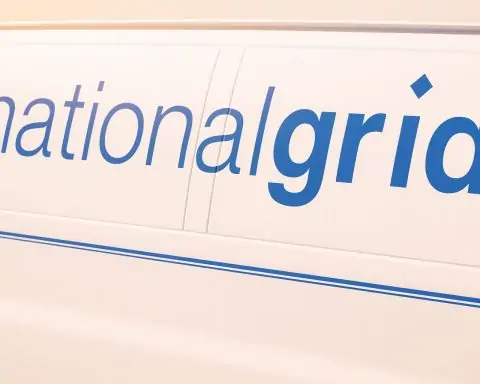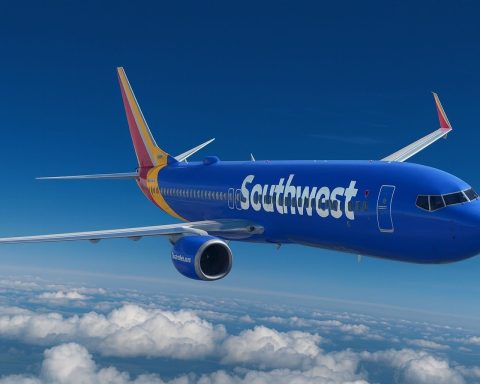- Latin carriers retrench while others expand: In late 2025 several Latin American airlines cut Costa Rica service. Brazil’s GOL will drop its São Paulo–San José route Nov 29, Colombia’s Wingo ends Bogotá–San José Oct 28, and Avianca is halting San José–San Juan and –Managua flights [1]. (Volaris already dropped SJO–Tulum.) At the same time, North American/European airlines are adding seats: Mexico’s Viva Aerobus starts Monterrey–San José Oct 30, Canada’s WestJet resumes flights from Vancouver/Winnipeg (Dec 12 – Apr 25), Porter Airlines begins Toronto/Ottawa service (Dec 4 – Mar 5), and Air France adds more Paris–San José flights for winter [2] [3].
- Brazilian tourism surges – then dips: The short-lived GOL São Paulo route drove a +26.5% jump in Brazilian visitors Jan–Aug 2025 [4]. Ironically, that service ends just as Brazil was helping pad 2025 arrivals. Industry analysts expect the new Canadian and European flights to partly offset losses from the Latin market shifts [5] [6].
- Tourism numbers and trends: Official data show ~1.49 million air arrivals in H1 2025, down ~2.8% YOY [7]. North American travelers (USA/Canada) remain the largest market (~1.12 M in H1, –2.9%), while Europe (≈215 K, –7.7%) is soft. South American visitors (≈73 K, +14.9%) grew substantially [8]. ICT (Tourism Board) expects only modest growth (+1.7%) for late 2025’s high season [9]. (For context, the UNWTO reports global arrivals up ~5% in Q1 2025 vs Q1 2024 [10], so Costa Rica has lagged the global rebound.) Tourism still accounts for roughly 8% of GDP [11], so the country is keen to lock in gains. Industry officials cite new “eco-luxury” resorts, a digital-nomad visa, and robust marketing (e.g. wellness campaigns) as growth drivers going forward [12] [13].
- First yellow fever case in 70 years: On Oct 12, the Health Ministry confirmed Costa Rica’s first yellow fever infection since 1955 [14]. A 29-year-old American tourist, returning from Peru’s Amazon, tested positive and is hospitalized [15]. The patient was not vaccinated. Health Minister Mary Munive downplayed panic, stressing that “we have the tools to handle this” and that the partner (who was vaccinated) tested negative [16]. The CDC now advises all travelers from endemic areas to carry valid yellow fever vaccine certificates, which may be checked on arrival [17] [18].
- Stronger colón hikes costs: Costa Rica’s colón has been firm (around ₡500 per USD in late 2025), giving visitors fewer colones for their dollars [19]. Economists expect it to trade roughly ₡510–₡545 by year-end [20]. This makes everyday prices higher: e.g. a typical local meal plate that cost $3–$5 a year ago now runs ~$7 for dollar tourists [21]. Tight U.S. tariffs on Costa Rican exports and high post-pandemic interest rates have driven this strength [22]. In practice, hotel and tour prices (often quoted in USD) have crept up with the colón, so visitors are urged to budget for higher local costs in 2025–26.
- Travel stocks and market outlook: Airline/tourism stocks tied to Costa Rica show modest upside. Air France–KLM (Euronext: AF.PA), a European gateway carrier, closed at about €11.40 on Oct 13, 2025 [23]. Analysts at StockInvest project a 90% probability AF.KLM shares trade between €11.37–€14.87 over the next 3 months [24]. JetBlue Airways (NASDAQ: JBLU, which flies to Costa Rica) ended Oct 13 at $4.55 [25]; its Wall Street consensus target is $5.28 (+16%) [26]. Copa Holdings (NASDAQ: CPA, owner of Copa Airlines) was about $122.75 [27]; analysts rate it “Buy” with a $155.33 target (+26.5%) [28]. (By contrast, Gol Linhas and Avianca are under pressure given the service cuts and broader Latin market weakness.) Overall, market forecasts imply continued growth: one industry report expects Costa Rica’s tourism market revenue to rise from ~$366M in 2025 to ~$526M by 2030 (7.5% CAGR) [29].
Airline Route Shifts and New Flights
Costa Rica’s tourism hub remains highly dependent on air connectivity, and the fall 2025 shuffle is dramatic. Several major Latin American carriers have pulled back amid tightening margins. For example, Brazil’s GOL Linhas Aéreas (which launched a San José–São Paulo flight only last Nov.) will terminate that route on Nov 29 [30]. GOL cited a “network realignment” in a press statement. Colombia’s Wingo (a low-cost LATAM spinoff) is ending its Bogotá–San José service after Oct 28, also blaming capacity adjustments [31]. Avianca, Costa Rica’s longstanding flag-carrier, is cutting Central America ties: it will stop San José–San Juan and San José–Managua flights later in Oct [32]. Even Mexico’s Volaris quietly dropped its seasonal Tulum–San José route in September. These Latin cuts reflect intense intra-regional competition and cost pressures. As Tico Times notes, local industry analysts warn that Costa Rica has “not shared” in the recent global tourism rebound [33] and needs these routes.
Paradoxically, Costa Rica also sees expansion from northern airlines targeting high-season travel. Hermes Navarro, head of connectivity at the Costa Rican Tourism Board, observes that “Costa Rica is now served by every major airline from the U.S., Canada and Mexico,” a level of access few other Latin destinations enjoy [34] [35]. New flights in 2025–26 include:
- Mexico–Costa Rica: Low-cost Viva Aerobus starts San José–Monterrey service Oct 30, tapping business/leisure traffic in northern Mexico [36].
- Canada–Costa Rica: After a pandemic hiatus, WestJet (Vancouver/Winnipeg–San José) and Porter Airlines (Toronto/Ottawa–Liberia) resume seasonal routes in Dec 2025 [37] [38]. (Porter’s Ottawa–Liberia is a first-ever direct link for that city.)
- USA–Costa Rica: JetBlue has added daily flights to Liberia (provincial airport) from U.S. cities, expanding beyond its San José service [39]. American, United and Southwest continue various flights (one announcement: Southwest begins a Nashville–San José flight Mar 2026) to complement this network.
- Europe–Costa Rica: Air France announced extra Paris–San José frequencies during the winter 2025/26 peak (Dec–Jan and Feb–Mar) [40]. (Iberia is also reportedly adding Madrid–San José service in 2025–26.)
- Regional upgrades: Copa Airlines is boosting its Panama-San José schedule to improve onward connections across the Americas [41]. Spirit and Volaris are upping frequency on popular U.S.–Costa Rica holiday routes [42].
In short, Costa Rica’s strategy is to offset Latin cuts by deepening ties with North America and Europe [43]. Officials stress that more direct routes (even if seasonal) “shorten travel time for key markets” and help distribute tourists to secondary regions like Guanacaste and the Caribbean coast [44]. The Aviation Authority is also upgrading domestic routes: local carriers (e.g. SANSA) are adding flights from San José to remote airports like Quepos, Puerto Jiménez and Punta Islita [45]. This cuts long bus drives to parks (Manuel Antonio, Corcovado, etc.) and spreads visitors (and spending) into rural communities [46] [47]. Infrastructure work (runway extensions, terminal upgrades, sustainable aviation fuel trials) is underway in parallel to support the growth [48] [49].
Industry Perspective: Hermes Navarro of ICT emphasizes Costa Rica’s connectivity advantage. “Costa Rica is one of the best-connected destinations in Latin America,” he said. “While some regional routes are shifting, our strategic partnerships with North America and Europe continue to strengthen our position as a global tourism hub.” [50]. Local hotel and tour operators are banking on this pivot. IDC Tourism senior analyst Adriana Bolaños (Ambassador to Spain) echoes the sentiment: “We are not looking for just any tourist. We want tourism that respects this singular and unique destination in all areas,” she said, underscoring Costa Rica’s focus on higher-value eco-tourism over mass arrivals [51].
Health Alert: Yellow Fever Case
The major shock of mid-October was a public health one. On Oct 12 the Ministry of Health announced a lab-confirmed yellow fever infection – the first in Costa Rica in 70 years [52]. The patient is a 29-year-old American woman who traveled from Peru’s Amazon region and was not vaccinated against yellow fever [53]. She is hospitalized in San José under intensive care, and authorities have issued vaccine alerts. Health Minister Mary Munive assured the public that there is no community transmission: the patient’s vaccinated partner tested negative, and yellow fever does not spread person-to-person. Nonetheless, the case triggered new travel precautions. Costa Rican health officials now require proof of vaccination for travelers coming from yellow fever endemic countries (e.g. parts of South America and Africa) – at airport entry points [54]. The U.S. CDC also reminds travelers: if you visited an endemic region within the last 6 weeks, notify doctors of your itinerary when seeking care [55].
This rare outbreak underscores the region’s wider problems: Peru and neighboring nations have seen hundreds of cases this year (with ~40% fatality rate reported by PAHO), so vigilance is needed. For tourists, the immediate impact is caution. Vaccination clinics and travel clinics are already busier. The government of Costa Rica, which vaccinates its own at-risk population by law, says it has contingency vaccine supplies on standby for any further cases. For now, experts urge compliance with vaccination rules but stress that one imported case does not mean endemic spread – especially since Costa Rica is mosquito-free in higher altitudes. Still, the news led some tour operators to highlight that their Amazon excursions do require yellow fever shots.
Tourism Economy and Forecasts
Longer-term, most experts still project growth for Costa Rican tourism – albeit tempered. A Mordor Intelligence report estimates the total industry was worth about $366.3 M in 2025 and will reach $525.6 M by 2030 (7.5% CAGR) [56]. This recovery is fueled by rising interest in “regenerative” and wellness travel, luxury eco-lodges (e.g. recent openings of Ritz-Carlton Reserve, Waldorf Astoria) and new visa schemes. International visitors (≈82% of pre-pandemic arrivals) remain the core market [57]. Even domestic tourism is picking up – a Mordor forecast sees 9.9% CAGR for domestic trips through 2030, thanks to growing local incomes and road improvements [58].
However, the 2025 data have been mixed. VisitNuevoArenal (a tourism outlet) notes that Costa Rica saw a ~2.8% drop in arrivals by mid-2025 versus 2024 [59]. ICT maintains a goal of 1.7% growth for the full year [60], banking on a strong second half (Oct–Dec). Industry voices are cautious: many analysts now doubt significant gains, pointing to a strong U.S. dollar (making Costa Rica relatively pricier) and lingering supply-chain costs that squeeze small businesses. On the plus side, Costa Rica’s adventure & nature reputation is still strong, and shoulder-season travel is growing in the U.S. and Canada (additional Florida-Denver and DFW-San José flights were added in summer).
In the broader market, Costa Rica stands out for tech-forward infrastructure. For example, Starlink satellite internet rolled out in late 2023 and has been transforming connectivity in rural Costa Rica [61]. The impact is seen in remote eco-lodges and mountain farms: Starlink dishes now deliver 50–100 Mbps broadband to areas that previously had only slow DSL [62]. This “digital lifeline” is boosting eco-tourism by enabling online bookings, remote work for expats, and even telemedicine in the park regions. One study even notes Costa Rica’s lead in Central America – with 85% of the population now online (the highest in the region) and multiple undersea cables connected – helps its travel sector handle large visitor volumes and digital nomads better than neighbors [63] [64].
One prevailing concern is sustainability and seasonality. Peak-period congestion at San José (SJO) and Liberia (LIR) is real: advisors warn that more routes mean more flights, straining airport capacity and local infrastructure. The government and airport companies are pre-emptively expanding terminals and improving roads to parks. They’re also working with airlines to adopt greener operations (biofuel trials, electric ground vehicles) in keeping with Costa Rica’s “Pura Vida” green brand [65].
Expert Insights and Policy
Experts emphasize balance. ICT’s Herméne Navarro frames the story as one of resilience: “Our key markets in North America and Europe remain robust,” he told media. “Even if some Latin routes close, we have more partnerships than ever.” Meanwhile, Ambassador Adriana Bolaños (Spain) says Costa Rica is not chasing mass tourism indiscriminately: “We want tourism that respects this unique destination,” prioritizing high-spending, eco-conscious visitors [66]. This selective approach aligns with Costa Rica’s long-term goals (protect 30% of land/waters, embrace renewable energy, etc.).
The Costa Rican government has also ramped spending on global promotion – a historic $43 million campaign (last reported) targeting key markets [67]. Inside the country, police and safety initiatives (e.g. a tourism police unit in Santa Teresa) are being boosted to reassure travelers that Costa Rica remains safe, as tourism CEOs insisted is needed to regain momentum.
Still, private-sector leaders warn that recovery hinges on external factors. Many cite the strong colón, as noted, and even El Niño forecasts (which could alter seasonal flows). Last quarter, hotels began offering more “rainy-season” deals to attract off-peak guests. Analysts also point out that broader Latin American airline consolidation (e.g. Azul, Avianca, Wingo all cutting capacity) may stabilize by 2026, meaning fewer sudden route changes next year.
Stock and Currency Outlook
From the financial angle, Costa Rica tourism is partly exposed through airlines and travel stocks. As of Oct 13, 2025, Air France-KLM (AF.PA) was €11.40 [68]. Technical analysts note AF.KLM is in a horizontal trading range, with modest upside if it holds support [69]. U.S. airline JetBlue (JBLU) closed at $4.55 [70]. It carries a “Reduce” consensus rating, but the average 12-month target is $5.28 (≈+16%) [71], reflecting hopes that price wars ease. Copa Holdings (CPA) – with strong Latin presence – was $122.75 [72]; analysts unanimously rate it “Buy” with an average target of $155.33 (+26.5%) [73]. (At the time of reporting, Gol’s GOLL4 shares on B3 had fallen ~10% this year on the route cuts, while Latam Airlines [not cited] is similarly pressured.)
Currency analysts warn that tourist prices will track the colón. One report predicts the exchange rate will linger around ₡510–₡520 per USD in 2025, possibly easing to ₡530 by year-end [74]. Under this scenario, tourists paying in dollars essentially face a ~20–25% rate swing versus 2023, meaning vacation budgets should be 20% higher in colones to get the same value. On the other hand, a few experts see a weaker dollar environment or seasonal dips that could push the rate above ₡540 temporarily, which would slightly help U.S. travelers.
Outlook: Overall, Costa Rica’s airlift strategy appears to be rebalancing markets. Travel analysts predict a shift in demographics: fewer Latin tourists but stronger long-haul demand from cold-weather destinations. With more direct links to Europe/Canada, Costa Rica hopes to fill any gaps. Domestic tourism will likely grow too, aided by the new short hops. If the yellow fever case remains isolated and safety campaigns reassure visitors, officials are cautiously optimistic high-season 2025–26 will see a recovery. As one industry forecaster put it: “Costa Rica’s skies are getting busier and more global – it’s a gamble, but one aligned with the country’s eco-luxury brand.”
Sources: This analysis draws on reports from The Tico Times [75] [76], Meyka travel blog [77], market analysts, and tourism data [78] [79]. Expert quotes and forecasts are from industry officials and publicly available financial forecasts [80] [81] [82], as cited.
References
1. ticotimes.net, 2. ticotimes.net, 3. startupnews.fyi, 4. startupnews.fyi, 5. startupnews.fyi, 6. meyka.com, 7. visitnuevoarenal.com, 8. visitnuevoarenal.com, 9. visitnuevoarenal.com, 10. ticotimes.net, 11. ticotimes.net, 12. www.mordorintelligence.com, 13. visitnuevoarenal.com, 14. ticotimes.net, 15. www.vax-before-travel.com, 16. ticotimes.net, 17. www.vax-before-travel.com, 18. ticotimes.net, 19. ticotimes.net, 20. ticotimes.net, 21. ticotimes.net, 22. ticotimes.net, 23. stockinvest.us, 24. stockinvest.us, 25. www.marketbeat.com, 26. www.marketbeat.com, 27. www.marketbeat.com, 28. www.marketbeat.com, 29. www.mordorintelligence.com, 30. ticotimes.net, 31. ticotimes.net, 32. ticotimes.net, 33. ticotimes.net, 34. ticotimes.net, 35. startupnews.fyi, 36. ticotimes.net, 37. ticotimes.net, 38. startupnews.fyi, 39. meyka.com, 40. ticotimes.net, 41. meyka.com, 42. meyka.com, 43. startupnews.fyi, 44. meyka.com, 45. meyka.com, 46. meyka.com, 47. meyka.com, 48. meyka.com, 49. meyka.com, 50. startupnews.fyi, 51. visitnuevoarenal.com, 52. ticotimes.net, 53. www.vax-before-travel.com, 54. www.vax-before-travel.com, 55. ticotimes.net, 56. www.mordorintelligence.com, 57. www.mordorintelligence.com, 58. www.mordorintelligence.com, 59. visitnuevoarenal.com, 60. visitnuevoarenal.com, 61. ts2.tech, 62. ts2.tech, 63. ts2.tech, 64. ts2.tech, 65. meyka.com, 66. visitnuevoarenal.com, 67. visitnuevoarenal.com, 68. stockinvest.us, 69. stockinvest.us, 70. www.marketbeat.com, 71. www.marketbeat.com, 72. www.marketbeat.com, 73. www.marketbeat.com, 74. ticotimes.net, 75. ticotimes.net, 76. ticotimes.net, 77. meyka.com, 78. visitnuevoarenal.com, 79. ticotimes.net, 80. stockinvest.us, 81. www.marketbeat.com, 82. www.marketbeat.com










